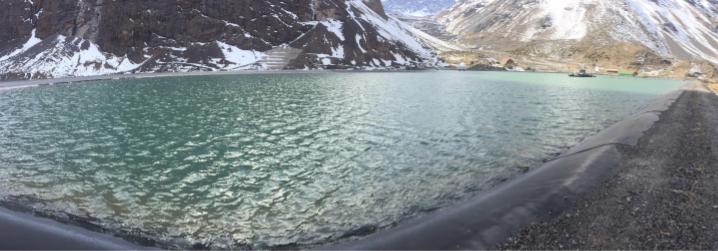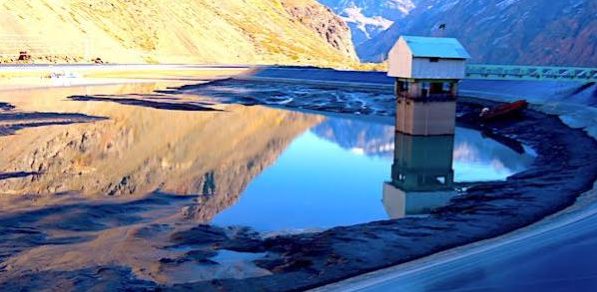SHARE
Hydro Power Plant Operations: Innovation Challenge (19K USD in Prizes)
Accumulation of sediments is a common problem in reservoirs used in a run-of-river hydro power plant. And the most common practice is to remove those sediments with a boat that sucks out the sediments from the bottom using hydraulic dredging.
Can you think of a different solution? Can you help to minimize the accumulation and/or remove the sediment in a hydro power plant in a more efficient way? Participate in this ennomotive challenge.
 Our client is a leading company in the power generation sector with a high commitment to protecting the environment and its natural resources.
In order to generate energy in run-of-river hydropower plants, it is often necessary to previously store water in small reservoirs to control the flow, which will be turbined according to the energy demand.
This challenge focuses on a reservoir located in a high-mountain area with 170,000 m3 storing capacity and a maximum depth of 6 meters that remains constant throughout the reservoir, made impermeable through a PVC-P geomembrane.
This small reservoir feeds directly from the river through an intake with 12 m3/s maximum flow capacity and equipped with a two-part 75 meters long sand trap. However, due to a very high concentration of suspended sediments in the water, the sand trap cannot retain all of them. As a consequence, many of the lightest and smallest sediments (basically clay and silt) settle down inside the reservoir, progressively decreasing its storing capacity up to 60 %!
Our client is a leading company in the power generation sector with a high commitment to protecting the environment and its natural resources.
In order to generate energy in run-of-river hydropower plants, it is often necessary to previously store water in small reservoirs to control the flow, which will be turbined according to the energy demand.
This challenge focuses on a reservoir located in a high-mountain area with 170,000 m3 storing capacity and a maximum depth of 6 meters that remains constant throughout the reservoir, made impermeable through a PVC-P geomembrane.
This small reservoir feeds directly from the river through an intake with 12 m3/s maximum flow capacity and equipped with a two-part 75 meters long sand trap. However, due to a very high concentration of suspended sediments in the water, the sand trap cannot retain all of them. As a consequence, many of the lightest and smallest sediments (basically clay and silt) settle down inside the reservoir, progressively decreasing its storing capacity up to 60 %!
The Innovation Challenge For Hydro Power Plant Operations
 Our client is a leading company in the power generation sector with a high commitment to protecting the environment and its natural resources.
In order to generate energy in run-of-river hydropower plants, it is often necessary to previously store water in small reservoirs to control the flow, which will be turbined according to the energy demand.
This challenge focuses on a reservoir located in a high-mountain area with 170,000 m3 storing capacity and a maximum depth of 6 meters that remains constant throughout the reservoir, made impermeable through a PVC-P geomembrane.
This small reservoir feeds directly from the river through an intake with 12 m3/s maximum flow capacity and equipped with a two-part 75 meters long sand trap. However, due to a very high concentration of suspended sediments in the water, the sand trap cannot retain all of them. As a consequence, many of the lightest and smallest sediments (basically clay and silt) settle down inside the reservoir, progressively decreasing its storing capacity up to 60 %!
Our client is a leading company in the power generation sector with a high commitment to protecting the environment and its natural resources.
In order to generate energy in run-of-river hydropower plants, it is often necessary to previously store water in small reservoirs to control the flow, which will be turbined according to the energy demand.
This challenge focuses on a reservoir located in a high-mountain area with 170,000 m3 storing capacity and a maximum depth of 6 meters that remains constant throughout the reservoir, made impermeable through a PVC-P geomembrane.
This small reservoir feeds directly from the river through an intake with 12 m3/s maximum flow capacity and equipped with a two-part 75 meters long sand trap. However, due to a very high concentration of suspended sediments in the water, the sand trap cannot retain all of them. As a consequence, many of the lightest and smallest sediments (basically clay and silt) settle down inside the reservoir, progressively decreasing its storing capacity up to 60 %!
What the company is looking for
The goal of this challenge is to develop a solution that maintains an active capacity of the reservoir above 70% during the entire year, without any risk of damaging the geomembrane at the bottom. The solution must adapt to sediments inflow oscillation coming from the river (80 % of the sediments accumulate during the snow melting period, from October to March). The solution also must be able to tolerate fluctuations in the water level of the small reservoir and be maintained/operated with the lowest workforce possible. After joining the challenge, you will find additional information about the reservoir geometry, river flows, intake/outlet structures and the current sediment removal system.Evaluation Criteria
Participants’ submissions will be assessed according to the following criteria:- Highest reservoir active capacity (operating volume).
- Resistant to high-mountain conditions (strong winds, low temperatures, ice, and snow).
- Lowest maintenance/operational costs possible.
- Lowest environmental impact (adequate handling of the sediments according to the natural conditions of the river).
- The best 8-year business case, considering investments, maintenance and operational costs for a maximum sediment accumulation scenario (100,000 m3 per year).
Timeline
This is a 3-round challenge with the following deadlines:- 1st round – 6 weeks + 3 weeks for evaluation
- 2nd round – 4 weeks + 3 weeks for evaluation
- 3rd round – 3 weeks + 2 weeks for evaluation
Awards
- The best submissions of Round 1 will share 3,000 USD.
- The winner will get a variable award based on the Business Case:
-
- 15,000 USD if Business Case ≤ 600,000 USD
- 12,000 USD if 900,000 USD ≥ Business Case > 600,000 USD
- 9,000 USD if Business Case < 1,200,000 USD.
- The second best solution will also receive 1,000 USD.
